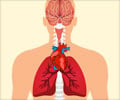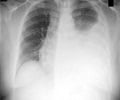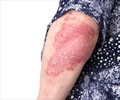Tuberculosis in its dormant form has a shorter, safer and effective treatment option in Rifampin compared to the standard Isoniazid therapy, says study.
- A pair of studies at the McGill University Health Center revealed that the shorter four-month treatment option of Rifampin is safer and more effective in curing latent tuberculosis infection (LTBI) than the standard nine-month alternative of isoniazid
- The results were similar in children and adults
- Since patients always prefer a shorter duration of treatment, this discovery might change the treatment course of LTBI
Latent TB infection or LTBI is a dormant version of the disease that does not cause symptoms but one that could lead to the serious illness if treatment is not provided.
Study Findings
Dr. Dick Menzies and his team from RI-MUHC led the study in which they followed 850 children and 6,800 adults with LTBI.The patients originated from nine different countries across five continents - Australia, Benin, Brazil, Canada, Ghana, Guinea, Indonesia, Saudi Arabia and South Korea.
The team compared two treatment regimens – the current standard nine-month treatment with isoniazid (INH) versus a four-month treatment with rifampin (RIF).
Rifampin Showed Better Results
- Researchers found that over 85 percent of children (and around the same percent in adults) completed the rifampin regimen without developing active TB, compared to a lesser percentage of children (76 percent) in the isoniazid regimen where two of them developed active TB.
- Children and adults accepted and completed the rifampin therapy with significantly fewer serious side effects, particularly drug induced hepatitis (INH is capable of causing serious liver toxicity which can prove fatal or require a liver transplant).
- The rates at which active TB set in were slightly lower with rifampin, which along with its shorter treatment schedule indicates that it is at least as effective as the nine-month treatment of INH in preventing TB.
Dr. Menzies has also acted as an advisor to the Public Health Agency of Canada, Citizenship and Immigration Canada, the Centers for Disease Control (CDC) and the World Health Organization (WHO) on TB. He expects that these new findings will fuel a fresh look at global practices and will have a substantial impact on TB and its treatment, especially considering the diverse group of participants in the study.
Tuberculosis
Tuberculosis (TB) is an infectious disease that mostly affects the lungs. The bacterium that causes the disease, Mycobacterium tuberculosis can also damage other parts of the body.The mode of transmission of TB is primarily through the air; it spreads from one person to another when a person with TB of the lungs or throat coughs, sneezes, or talks. Symptoms include a bad cough that lasts 3 weeks or longer, weight loss, loss of appetite, weakness, and fever.
Not everyone who gets infected with the TB bacteria becomes sick or has symptoms. As a result, there are two TB-related conditions: latent TB infection (LTBI) and TB disease.
If a person has LTBI, they cannot pass TB germs to other people but will need to stay on medicines for 3, 6, or 9 months, so they do not get TB disease. If a person has TB disease, they will need to take TB medications for at least 6 months; it takes at least 2 to 3 weeks of taking the pills to no longer spread TB germs to other people. Patients need to stay on the medicines to be cured even if they start to feel better.
A quarter of the global population is infected with LTBI of which 10 percent will develop active TB.
TB can be diagnosed through skin tests, blood tests, x-rays, and other tests.
The treatment regimens for LTBI are isoniazid for 6 to 9 months, INH and rifapentine (RPT) for 3 months, or rifampin for four months. While all the regimens are effective, it is best for the patient and the doctor to decide the right medicine. Patients are more likely to complete shorter treatment regimens.
References:
- Safety and Side Effects of Rifampin versus Isoniazid in Children - (https://www.nejm.org/doi/full/10.1056/NEJMoa1714284)
- Treatment Regimens for Latent TB Infection (LTBI) - (https://www.cdc.gov/tb/topic/treatment/ltbi.htm)
Source-Medindia














